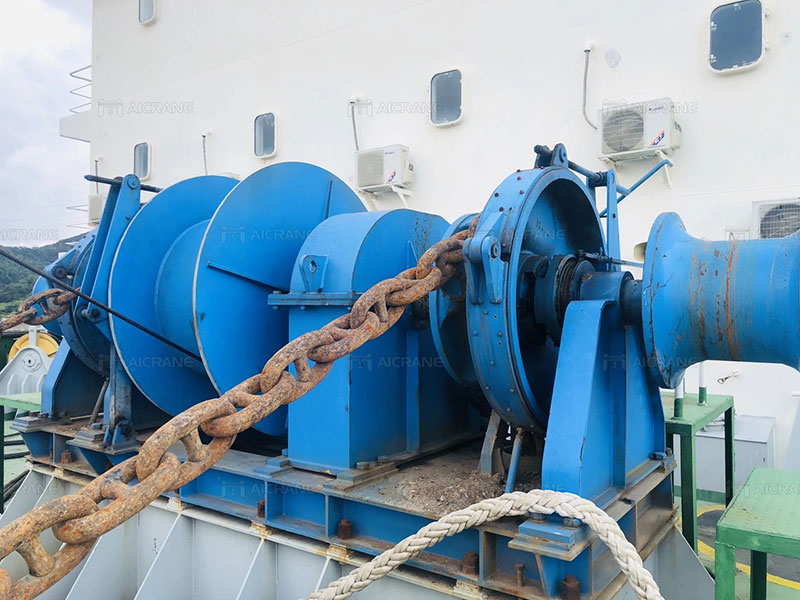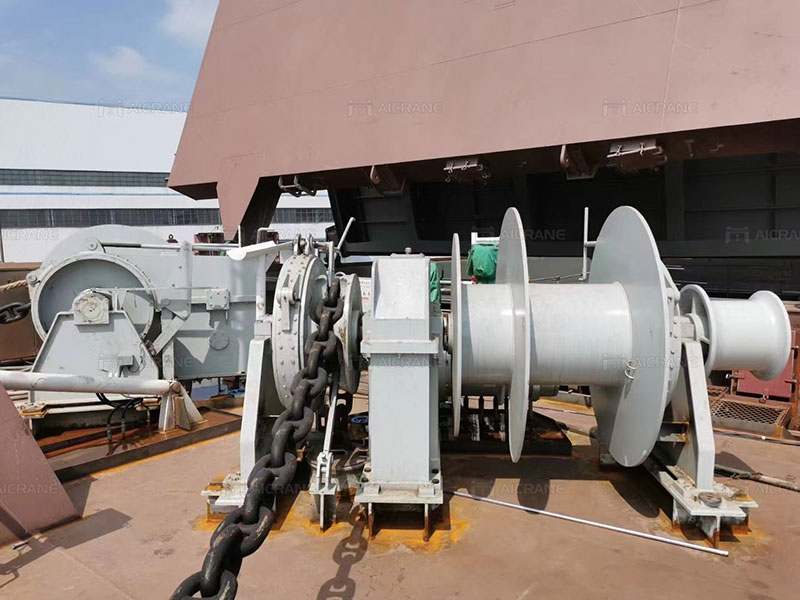Marine deck winches are crucial pieces of equipment on ships and vessels, responsible for various tasks such as anchoring, mooring, and cargo handling. These powerful machines play a pivotal role in ensuring the safety, efficiency, and reliability of maritime operations. Understanding how a marine deck winch works is essential to appreciate its significance and optimize its performance. In this article, we will delve into the mechanics behind the operation of a marine deck winch and explore its key components and functions.
The Basics of a Marine Deck Winch
At its core, a marine deck winch is a mechanical device designed to wind or unwind ropes, cables, or chains. It consists of several essential components that work together to provide pulling power and control. The winch’s primary components include the drum, motor, gear system, braking mechanism, and control system.

The Drum: The Core of the Winch
The drum is the central component of the marine deck winch. It is a cylindrical spool around which the ropes, cables, or chains are wound. The size and design of the drum vary depending on the winch’s intended use and capacity. The drum’s rotation, driven by the winch’s motor and gear system, determines whether the ropes are being wound in (retrieval) or wound out (paying out).
The Motor: Providing Power
The motor is the heart of the marine deck winch, providing the necessary power to drive the winching operation. The motor can be electric, hydraulic, or pneumatic, depending on the specific winch design and the vessel’s power source. The motor’s capacity, expressed in horsepower (HP) or kilowatts (kW), dictates the winch’s pulling power and operational capability.
Gear System: Multiplying Force
The gear system serves as a force multiplier in the marine deck winch. By adjusting the gears’ ratios, the winch can increase the motor’s torque to provide more pulling force. This gear system allows the marine winch to handle heavy loads efficiently, making it suitable for anchoring, mooring, and cargo handling applications.

Braking Mechanism: Ensuring Control and Safety
The braking mechanism is a critical safety feature in a marine deck winch. It is responsible for holding the load in place when the winching operation is not active. The brake ensures that the ropes or chains do not unwind unintentionally, preventing accidents and damage to the equipment or vessel. The braking mechanism may be mechanical, hydraulic, or electric, depending on the winch’s design.
Control System: Operating the Winch
The control system provides the operator with the means to control the marine deck winch’s functions. It allows the operator to start, stop, and control the winch’s direction and speed. Control systems can range from simple manual controls to advanced electronic control panels with digital displays and remote operation capabilities.
Working Principle: Retrieval and Paying Out
The working principle of a marine deck winch involves two primary operations: retrieval and paying out. During retrieval, the winch winds in the ropes, cables, or chains, effectively pulling the load towards the winch. This operation is commonly used for hoisting heavy objects, such as cargo or equipment, onto the vessel’s deck. On the other hand, during paying out, the winch unwinds the ropes or chains, allowing the load to move away from the winch. Paying out is often used for anchoring, mooring, and deploying equipment or rescue operations.
Applications in Maritime Operations
Marine deck winches are versatile tools used for a wide range of maritime operations. Some common applications include:
- Anchoring: Deck winches are essential for lowering and retrieving anchors, ensuring the vessel stays securely in place.
- Mooring: Deck mooring winches assist in handling mooring lines, allowing the vessel to be safely docked and secured.
- Cargo Handling: Deck winches facilitate the loading and unloading of cargo, equipment, and supplies.
- Towing and Salvage: Winches are used for towing other vessels or assisting in salvage operations.
- Emergency Response: Deck winches play a crucial role in rescuing people or vessels in distress.
Conclusion
Marine deck winches are indispensable tools that power various maritime operations, from anchoring and mooring to cargo handling and emergency response. Understanding the mechanics behind their operation provides insights into their significance and versatility. The drum, motor, gear system, braking mechanism, and control system work in tandem to provide pulling power, control, and safety. With their crucial role in ensuring safety, efficiency, and reliability on board, marine deck winches remain fundamental equipment for any vessel navigating the open waters.